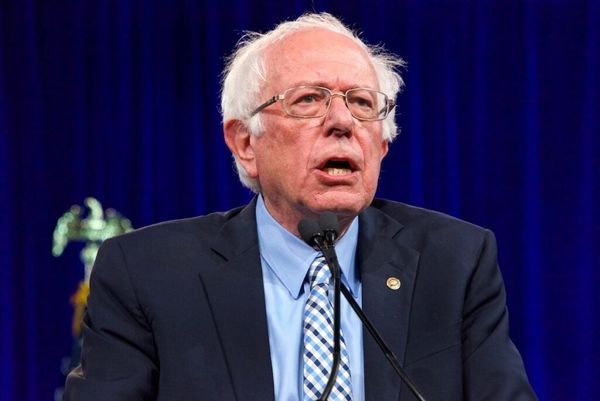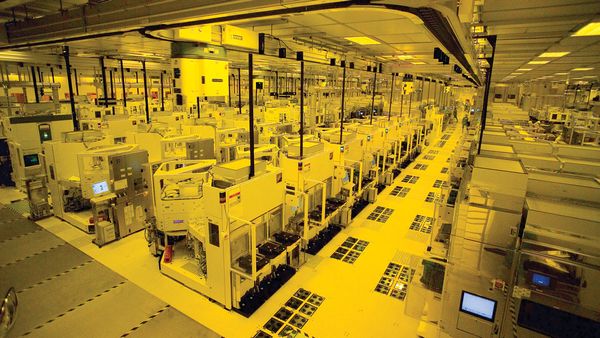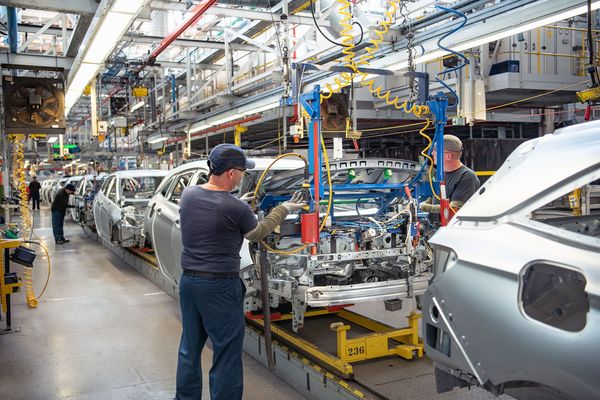
Hsinchu, Taiwan – A crane bird flies across a silent rice paddy, the water slowly trickling in the background. It is a tranquil and stereotypical image of an East-Asian countryside. Little seems to suggest I am just a few kilometres removed from one of the hearts of the global economy.
This is Hsinchu, a small city close to Taipei in Taiwan. It is what you could literally call the Silicon Valley of the world.
Just a few kilometres from the tranquil rice paddies, gargantuan buildings rise from the ground, air conditioning humming permanently over the bustle of traffic. These are the factories that build the silicon chips or semiconductors that make our smartphones, computers and even artificial intelligence (AI) systems such as ChatGPT work.
Yet these two worlds, tranquil nature and high-tech manufacturing, are increasingly clashing on the island.
Taiwan is the world leader in the production of computer chips.
Taiwan Semiconductor Manufacturing Company Limited (TSMC) is the largest chip manufacturer in Taiwan. By the third quarter of 2024, it had conquered 64 percent of the global semiconductor market, according to research firm Counterpoint.
The second-biggest player, South Korea’s Samsung Foundry, represented only a distant 12 percent.
Chip manufacturing makes up an outsized part of Taiwan’s economy and contributes 25 percent of the gross domestic product (GDP) of the island. In 2020, the market value of TSMC was equal to the size of half of Taiwan’s economy, as per a study at the time.
Few countries seem to be able to outdo the Taiwanese at manufacturing chips. However, this semiconductor success is also raising sustainability issues.
Chip manufacturing consumes large amounts of water and energy, and emits emissions through chemicals. TSMC alone consumes about 8 percent of the island’s electricity, according to a recent report by S&P Global Ratings.
“After the petrochemical industry, the electronics industry is the biggest emitter of Taiwan,” Chia-Wei Chao, the research director at the nonprofit Taiwan Climate Action Network and adjunct assistant professor at the National Taiwan University, told Al Jazeera.
“Semiconductors are also a rapidly growing industry, which is worrying, to say the least.”
This is even bringing them into conflict with the farmers that Taiwan’s chip factories are located near.
In 2021, during a drought, the Taiwanese government halted irrigation of farms, so the huge chip factories could use the saved water. Today, anxiety is growing over how solar farms, which are needed to power chip manufacturing, might take up farmland.
“There seems to be a lack of systemic analysis on the environmental effects on semiconductor production,” Josh Lepawsky, a professor of geography at Memorial University of Newfoundland in Canada, told Al Jazeera.
“That’s a grave mistake.”

‘Crazy’ AI
While the water use of chip factories has garnered much international attention in the past few years, on the island itself, it is considered old news. Semiconductor manufacturers are already recycling most of the water they use, and the government has invested in more water infrastructure since the drought of the past years.
The Taiwanese today are worrying about the industry’s energy use. Artificial intelligence achieved large breakthroughs in the past years, driven by the large language models of US companies like OpenAI and tools such as ChatGPT. This revolution was powered by chips that were mostly manufactured in Taiwan.
The AI hype, in turn, is causing Taiwan’s huge chip factories to go into overdrive.
“The AI market is becoming more crazy than ever,” Lena Chang, a campaigner at Greenpeace East Asia, told Al Jazeera.
“Because of it, the energy use of the semiconductor industry is becoming a major problem for Taiwan, because of increased emissions and even possible shortages.”
In all the craziness, the climate might have been forgotten. “The main goal is now to develop AI and the related supply chains,” Chang said.
“Energy is not a big concern. The government should be more active in developing sustainable energy.”
Slow renewables
One key issue here is the Taiwanese energy market. Taiwan is currently phasing out its nuclear reactors. Construction of solar and wind energy, however, has been lagging.
“Taiwan still heavily relies on fossil fuels,” Chang said. “More than 80 percent of our energy supply is from gas and coal.”
Just 11 percent of Taiwan’s energy supply between September 2023 and August 2024 came from wind, solar and hydropower, according to the Energy Administration.
A declining nuclear share contributed another 5.6 percent.
The Taiwanese government in 2016 set a target of 20 percent renewables by 2025, which it will almost certainly miss.
Offshore wind, for example, is lagging behind government targets. In 2018, Taiwan awarded 5.7 gigawatts (GW) of offshore wind to be installed by 2025.
By 2024, the government had downgraded its targets, and hoped between 2.56GW and 3.04GW would be ready that year.
“Offshore wind went quite well until 2022. But then, for the following auction rounds, Taiwan tried to get both cheap energy and high localisation of the supply chain,” Raoul Kubitschek, the managing director of the renewable energy consultant NIRAS Taiwan, told Al Jazeera.
Wind energy is particularly running into Taiwan’s localisation rules. Taiwan’s government is demanding that very high percentages of its wind turbines and other components be produced locally.
This local production, however, is not picking up fast enough.
“You cannot build a new supply chain this fast,” Kubitschek said. “Taiwan only constructed its first commercial-sized offshore wind farm in 2017. It takes time to create a domestic wind energy industry.”
Solar energy is also running into barriers. Rooftop solar has been largely saturated on the island. Larger-scale solar farms, in turn, are controversial because of land disputes. Groups like farmers are afraid they will encroach on farmland, leading to protests and lawsuits.
Chia-wei Chao is hoping to turn this around.
He leads some pilot projects where farmers themselves place solar panels on their land. “We shouldn’t force farmers to sell their land or stop farming to install solar panels,” Chao told Al Jazeera. “We should allow a combination of the two. We need to regain the trust of farmers.”
For now, however, Taiwan’s energy market remains reliant on fossil fuels. All the while, the semiconductor industry’s energy use is rapidly increasing.
That is an issue for semiconductor manufacturers. They are being pressured by their customers into going green.
Apple, a prominent buyer of TSMC chips, wants its large suppliers to commit to 100 percent renewable energy use by 2030 – a far-off target given current trends.
Taiwanese electricity prices are also increasing rapidly, and the threats of power outages are growing.
According to Kubitschek, broader changes are needed in Taiwan’s energy market, including relaxing localisation policies, reforming permitting and looking at the role of Taipower, the government-owned energy company.
However, Kubitschek says such reforms might be far off. Greenpeace, in the meantime, wants to bypass this conundrum and demands that companies like TSMC build their own sustainable energy installations.
CHIPS Acts
Taiwan’s issues with semiconductor manufacturing are not unique, however.
Since COVID-19 and the associated shortages in critical goods such as semiconductors, governments like the United States and the European Union want to make more chips locally.
Both the US and EU passed legislation to support domestic chip production, although US President-elect Donald Trump has harshly criticised his country’s CHIPS and Science Act.
Both the US and the EU are now running into similar issues as Taiwan.
In the US, for example, new chip factories are being placed in areas prone to drought. TSMC is investing $12bn in a factory in the desert regions of Arizona.
That is bad planning, according to the Memorial University of Newfoundland’s Lepawsky.
“The [US] CHIPS Act didn’t consider water use. That will cause problems in the future.”
In Europe, worries about chip manufacturing’s environmental effects are also increasing.
In 2022, the EU announced that it wanted to increase Europe’s share of the global semiconductor manufacturing market to 20 percent by 2030, prompting TSMC and Intel to unveil plans for new plants in Germany and Poland (Intel has since postponed its plans as it seeks to rein in heavy financial losses).
According to a study by the research firm Interface, if Europe were to achieve its 20 percent production target, the continent’s semiconductor emissions would rise eightfold, clashing with other policy programmes like the Green Deal.
Chip gasses
Researchers are also worrying about another type of climate effect of semiconductors.
Besides water or energy use, semiconductor manufacturing produces greenhouse gases. During the complex manufacturing flow, the processes themselves can produce their own emissions.
These are called scope 1 emissions, according to Emily Gallagher, the director of the Sustainable Semiconductor Technologies and Systems (SSTS) programme of the research institute Imec in Belgium. TSMC is one of the companies that is a member of Imec’s SSTS programme.
“During the etching process, we use plasma to selectively remove material to build minuscule structures in chips. The etch process often uses gasses such as the fluorinated chemical CF4,” Gallagher told Al Jazeera. “CF4 has a global warming potential that’s 6,500 times larger than CO2.”
According to calculations by Imec, for an average chip, roughly 10 percent of the production emissions are scope 1. Reducing these will mean adapting the highly complex semiconductor manufacturing procedures by increasing process efficiency to increase utilisation of the gases, by replacing existing gases if possible and by reducing their use.
“For now, scope 1 emissions do not dominate the emissions associated with semiconductor manufacturing,” Gallagher said. “But as factories decarbonise their energy supply, its importance will increase dramatically.”
Back in Taiwan, energy use is still on everyone’s mind.
Taiwan is at the core of the global AI hype, not just producing chips, but even making the systems that cool the hot-running servers on which AI models are trained. Whether the local energy market can handle that remains to be seen.
“We need more ambitious goals and the means to accomplish them”, Chang said. “There’s a real concern now about power shortages. Large power users such as semiconductor companies need to take responsibility.”
This article was supported by the Pascal Decroos Fund.










